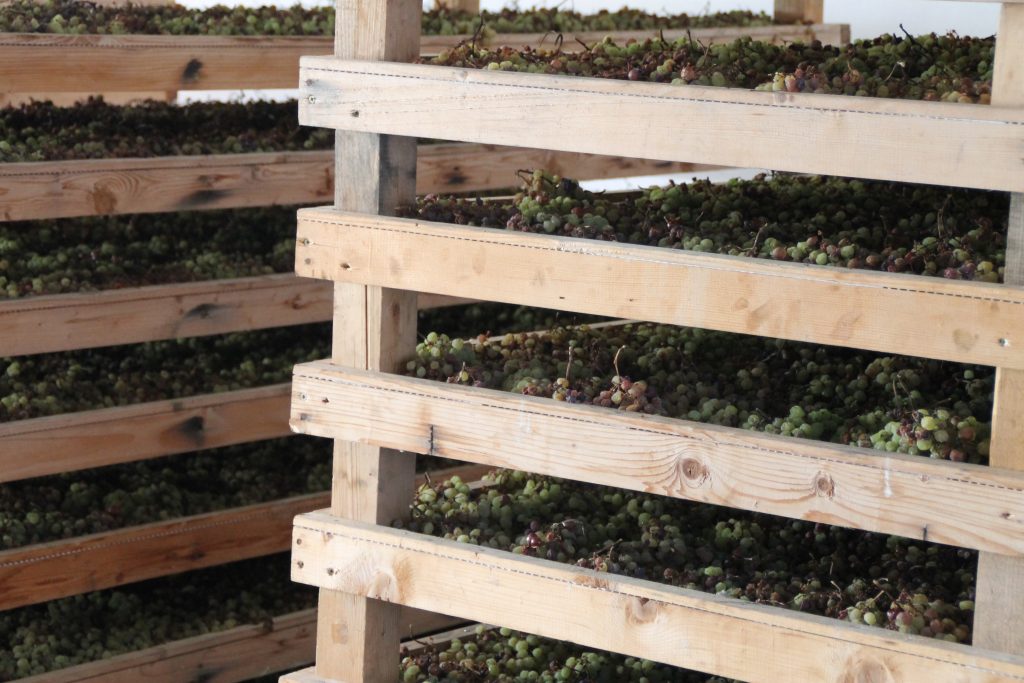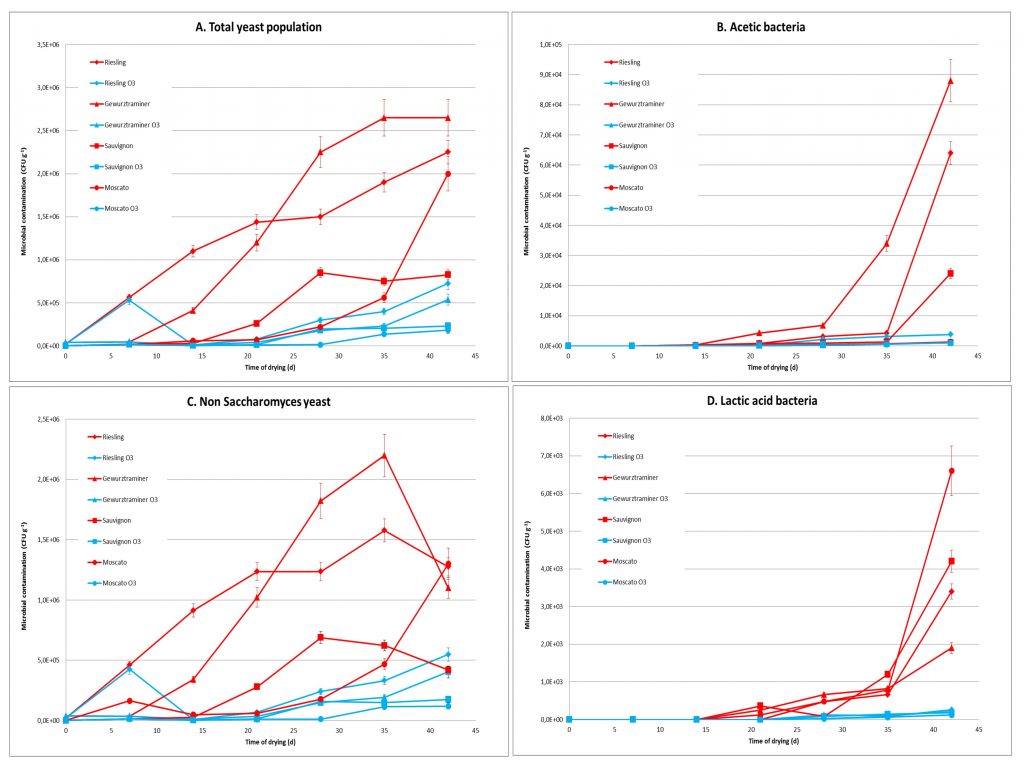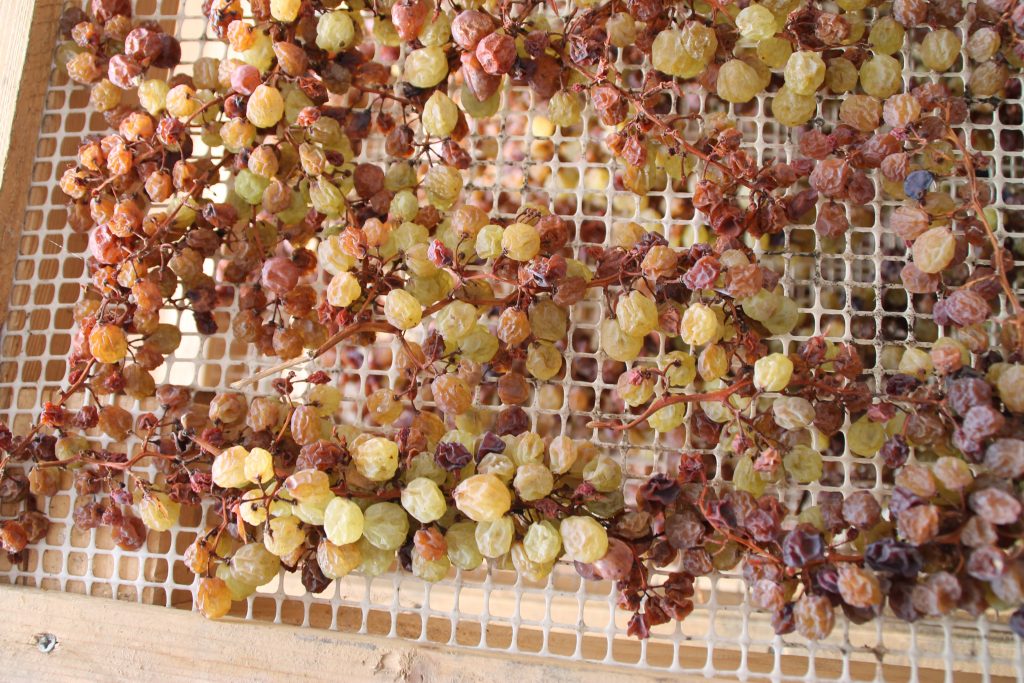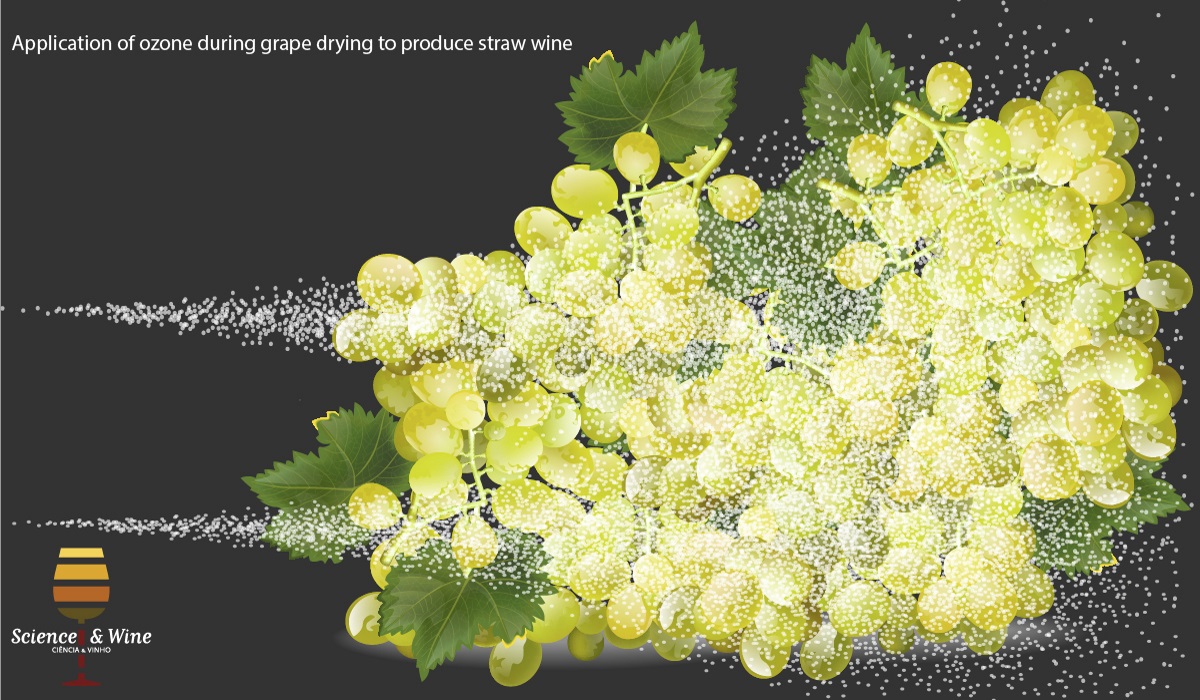By Raffaele Guzzon
Ozone is an emerging tool in winemaking, recently applied for controlling spoilage microorganisms in winery. This sanitizer has some attractive features. Thanks to a new generation of O3 generator is possible a cheap and in situ production of this gas. Ozone counteract the development of a large range of microorganism, from viruses to molds. Also, it is able to eliminate the parasites of the fresh fruits such as insects that can be vectors of dangerous microbial contaminations (i.e. the sour rot due to D. suzukii proliferation). The high reactivity of ozone ensures it disappearance already after few minutes from the application, therefore this gas is particularly interesting in the treatment of food because the risk of residues that can affect the safety of consumers are totally excluded. For these reasons the ozone finds numerous applications in the post-harvest treatment of vegetable and fruits, to preserve they from microbial spoilage. The study recently published on the Journal of Applied Microbiology from Raffaele Guzzon and her colleagues of the Edmund Mach Foundation (Italy) describes a new application of ozone as effective and safe alternative to chemical preservatives which are today involved in the control of microbial alterations of grapes.
The Italian’s researchers applied the ozone at the conservation of grapes involved in the production of straw wines. The production of sweet wine from dried grapes is an ancient technology, widespread in the Mediterranean area. In this winemaking process, grapes were dried before crushing for a long period, to concentrate their components and enhance their biotransformation, which results in peculiar flavors and taste of the final wines. Some straw wines are present in Italy (Amarone della Valpolicella, Vino Santo Trentino, Vin Santo Toscano, Passito di Pantelleria), Spain (Sherry), Greece (Samos’s wines), in all of these must made from dried grapes contains high concentration of fermentable sugars, which does not fit with the technological potentiality of oenological yeasts. Indeed, the alcoholic fermentation stops after the production of about 13 – 15% v/v ethanol, and a relevant amount of sugars resides stably in wine.

On the contrary, grapes are not microbiologically stable during the drying period that follows harvesting. Bunches are stored in fresh and ventilated warehouses to allow a gentle water loss. This process usually takes usually between 3 and 6 months, and exposes grapes to the risk of microbial spoilage, product losses, and accumulation of toxic compounds such as ochratoxin A. In this work the ozone was evaluated as tool to preserve grapes during drying, in terms of qualitative and quantitative changes induced in the epiphytic microflora. In addition, the alteration exerted by ozone on grape’s chemical composition was analyzed. This latter deepening is necessary because ozone is a powerful oxidizing agent and one must be sure that it does not alter the organoleptic profile of the wines derived from the grapes exposed to it. Grapes from four vine varieties were treated with ozone produced by a cold plasma generator during the entire drying period (6 weeks). Treatments with ozone were performed weekly and each of them lasted 6 hours, reaching an O3 concentration of about 100 ppm. The microflora was quantified 12 hours after O3 treatments by plate count and characterized by 454-pyrosequencing. Obtained results were compared with those obtained on identical, untreated, grape samples. At the end of drying, an extensive chemical characterization was performed onto the whole mass of grapes by FT-IR and GC-MS.

The experiments demonstrated that ozone acts as antiseptic agents maintaining the microflora of treated grapes under the limit of spoilage activity, in particular for Botrytis cinerea and acetic acid bacteria. The 454-pyrosequencing of grapes at the end of drying showed two different microbiota profiles, in function of the treatment performed on grapes. In the case of ozone treated grapes, we observed maintenance of a large biodiversity, with the prevalence of yeasts involved in the first steps of winemaking process. In untreated grape samples we observed the opposite situation, and Acetobacter sp. and Botrytis sp. dominated the microbiota. The GC-MS characterization of volatile profile of dried grapes excluded alteration due to ozone that do not negatively affect the studied free and bound volatile compounds. No significant differences were observed in terms of volatile compounds typical of the studied aromatic grape varieties, which therefore are suitable for the production of high-quality wines.

These promising results must be considered as preliminary evidences, and some of the observed differences between control and ozone-treated samples need further confirmation with a larger experimental plan. Nevertheless, this study already highlights that ozone treatment of grapes could be a promising solution to improve the conservation of wine grapes after harvesting.
Those interested in a longer length report can download the working paper at:
https://onlinelibrary.wiley.com/doi/full/10.1111/jam.13774

Raffaele Guzzon
After graduating in Food Technology at the University of Parma (Italy), he earned the PhD at the University of Trento, with a work about the application of immobilized microbial cultures of lactic bacteria at the oenological fermentation. He works since 2003 at the Edmund Mach Foundation, a research center based in the North of Italy, and currently he coordinates the local food microbiological laboratory. Raffaele Guzzon teaches Wine Microbiology at the Course of Viticulture and Enology of the University of Trento. He performs consulting in the fields of microbiology and winemaking in some Italian wineries.
The main fields of scientific activities concern the study of evolution of microbial ecosystems during the winemaking and the impact of oenological practices on them. He carries out experiments to optimize the winemaking protocols by the use of environmentally-friendly technologies. Winner in 2009 of the Award of the Italian Society of Viticulture and Enology “Italian Research for Development”, was a finalist in all subsequent editions. He is the author of numerous publications on scientific and technical journals.

